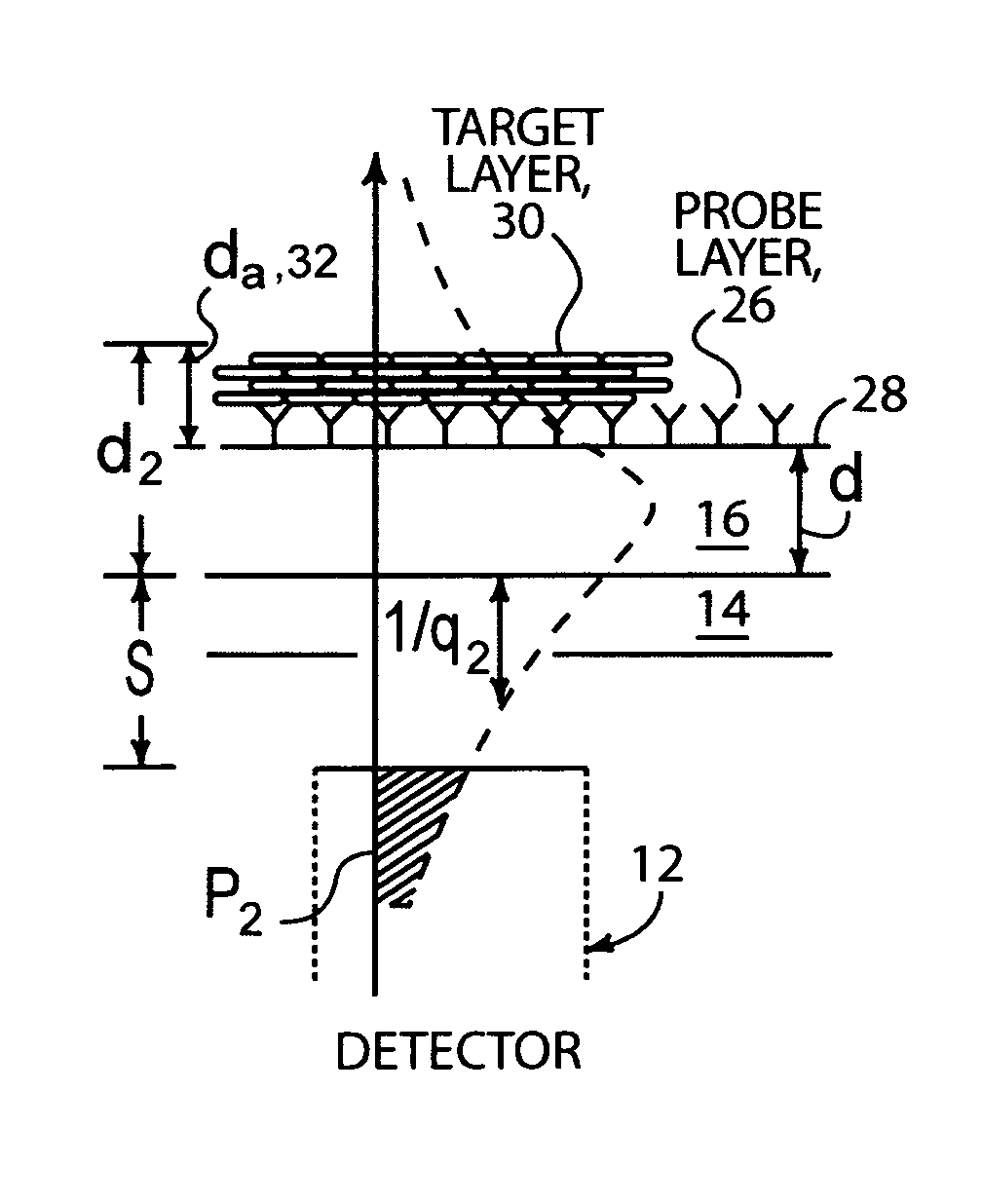Optical analyte sensor
an analyte sensor and optical technology, applied in the field of analyte detection, can solve the problems of reducing the applicability of local detection characteristics of atr and rsw waveguide analyte sensors to complex and multiple analyte environments, requiring complex sample preparation, and limited number of conventional atr and rsw waveguide analyte sensors
- Summary
- Abstract
- Description
- Claims
- Application Information
AI Technical Summary
Benefits of technology
Problems solved by technology
Method used
Image
Examples
Embodiment Construction
[0029]Briefly, the present invention includes a waveguide sensor that for simultaneously detecting multiple analytes. The process of detection does not require labeling of the analytes with fluorescent or other tags. The waveguide has a thin core that can create large evanescent fields which can be detected in the region of the evanescent field and which fields interact with adlayer regions through which the evanescent fields pass, thereby generating changes in the field intensity.
[0030]In another embodiment of the invention, light may be coupled out of the waveguide in amounts which vary as a result of the interaction of the core with the analyte.
[0031]It has been theoretically determined by the present inventors that the power distribution of the electromagnetic field in the waveguide is dependent on the thickness of adlayers which are assumed, in the calculations which follow, to be target species bound to patches of probe species immobilized in the vicinity of the waveguide surf...
PUM
| Property | Measurement | Unit |
|---|---|---|
| width | aaaaa | aaaaa |
| refractive index | aaaaa | aaaaa |
| refractive index | aaaaa | aaaaa |
Abstract
Description
Claims
Application Information
 Login to View More
Login to View More - R&D
- Intellectual Property
- Life Sciences
- Materials
- Tech Scout
- Unparalleled Data Quality
- Higher Quality Content
- 60% Fewer Hallucinations
Browse by: Latest US Patents, China's latest patents, Technical Efficacy Thesaurus, Application Domain, Technology Topic, Popular Technical Reports.
© 2025 PatSnap. All rights reserved.Legal|Privacy policy|Modern Slavery Act Transparency Statement|Sitemap|About US| Contact US: help@patsnap.com



